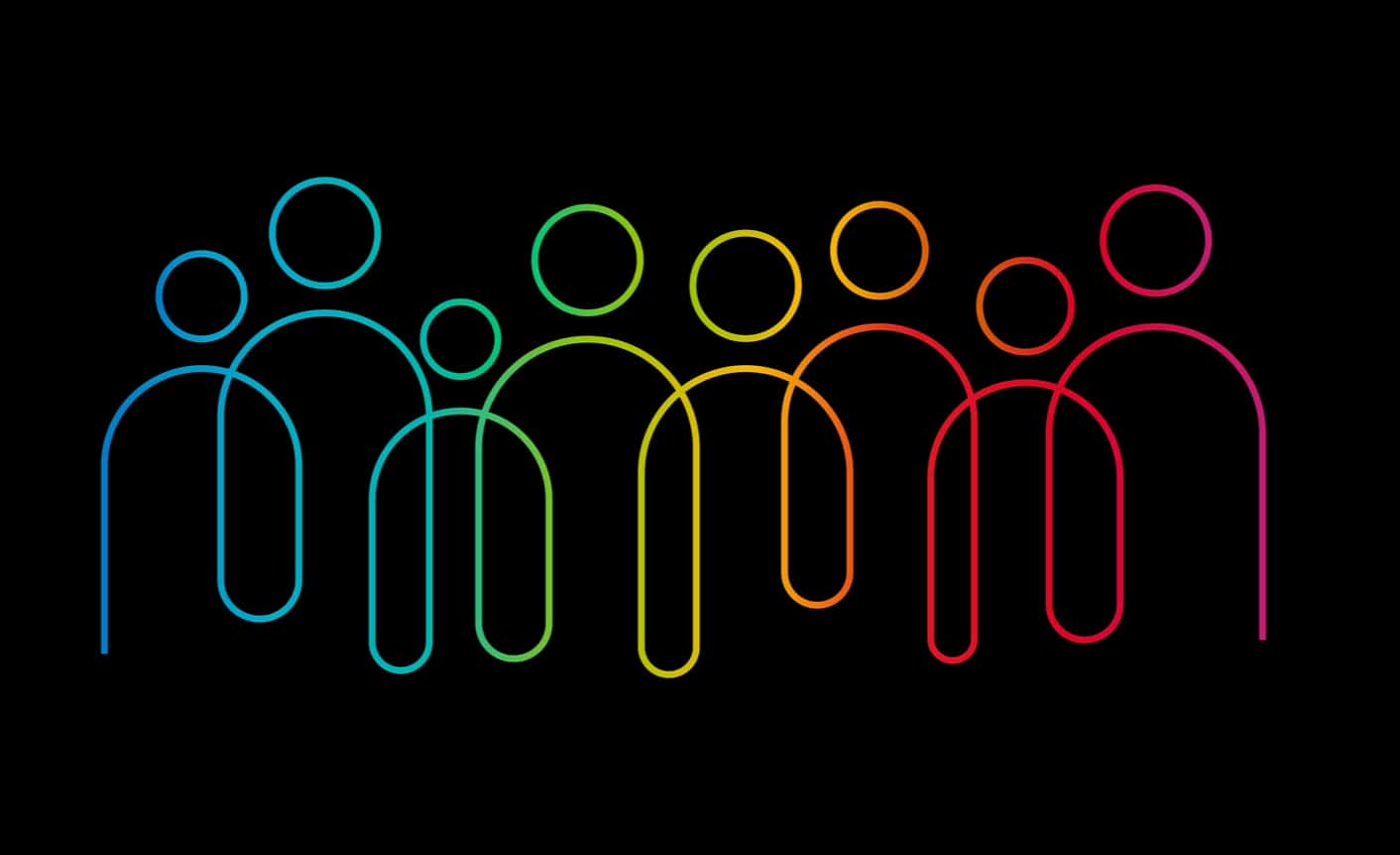
Words matter. And for too long, language has excluded underrepresented groups. But the good news is that with increased awareness, more people and organizations are focusing on inclusive language.
This quick inclusive language guide will give you the tools to bring inclusivity into the center of your content strategy. Because we’re all worthy of feeling valued and included.
What’s inclusive language?
| Inclusive language demonstrates awareness of the vast diversity of people in the world. Inclusive expressions don’t presume to know someone’s gender or imply biased or prejudiced ideas. Whether that’s in relation to ethnicity, sexual orientation, gender identity, ability, or any other personal characteristic. Using inclusive language offers respect and belonging to all people — so it’s about more than just avoiding offensive language. |
And the different aspects of inclusive language are:
- Gender-neutral language
- Person-first language
- Proper acknowledgment of people and cultures
- Respectful language
- Accessible language
- History-conscious language
- Intentional language (that avoids unnecessary descriptions)
- Non-stereotypical language
- Diverse and accurate representation
More than ever, the future is focused on holding ourselves accountable for the way history has rejected, oppressed, and excluded certain members of society. And that starts with the language we use. So, when it comes to creating any type of content, inclusivity is a vital component.
Practical tips for writing with inclusivity
Here are some examples of non-inclusive language and inclusive alternatives:
Aspect of inclusive language Unpreferred word/phrase It’s better to say Why? Gender-neutral language Latino/Latina Latinx This can reinforce gender stereotypes that gender is binary and exclude non-binary people. Person-first language Homeless person A person experiencing homelessness, a person without a home You should always put the person before the disability, disorder, or diagnosis, as it doesn’t make up their identity. Proper acknowledgment of people and cultures indigenous peoples Indigenous Peoples You need to capitalize the names of cultures, nationalities, and religions. Respectful language Sexual preference Sexual orientation This term has a contested implication that someone’s sexuality is their choice. Accessible language Behind the eight ball At a disadvantage This phrase comes from pool/billiards, which not everyone may be familiar with History-conscious language Redline Priority line This term refers to the systematic denial of services to people living in certain areas based on their race or ethnicity. Intentional language A female scientist A scientist Think about what descriptions are necessary, and in this case mentioning someone’s gender isn’t relevant. Non-stereotypical language Man up Be brave This term perpetuates stereotypes that men need to appear strong at all times and implies women can’t be. Diverse and accurate representation Manmade Artificial, manufactured This phrase ignores the role women and non-binary people play in shaping our history and innovating our future.
If you want to learn more about the different aspects of inclusive language (as well as more examples of how they’re used in content), make sure to check out the Acrolinx Inclusive Language Guide. We’ll talk about the importance of inclusive language in business and show you how to write more inclusive enterprise content. You’ll learn more about the different aspects of inclusion, the role of design in inclusive content, and the capabilities of diversity and inclusion technology.
It’s not just words: It’s the way you write
Writing in plain language is an essential part of inclusive communication. Plain language makes information cognitively accessible for neurodiverse readers and people who have disabilities. It also doesn’t assume all people have the same literacy levels, or any prior knowledge on the topic they’re reading about.
Here are a few tips for communicating in plain language:
- Use short sentences with one idea per sentence
- Use short paragraphs with one topic per paragraph
- Minimize cross-references
- Structure information in chronological order
- Choose commonly used words with fewer syllables
- Choose active voice over passive voice
- Use pronouns or write in the first person to help the reader put themselves in the story
- Include pictures charts, and highlight key information
Using plain language also helps make content easier to translate and localize. It avoids idiomatic and colloquial language, which means people of all nationalities are more likely to understand the original message you’re trying to convey. Following the plain language principles will also improve your content’s level of clarity and conciseness.
Respecting gender and pronouns in your content
Pronouns are words that we use to replace names, like she/her/hers, he/him/his, or they/them/theirs. In a world that tends to recognize just two genders, we often fail to acknowledge people whose identity doesn’t fall into one of those two categories.
Some people identify as a gender different from the one they were assigned at birth. They may have a gender identity that lies on a scale between male and female. They may identify as neither male nor female, or they may not identify with a gender at all. It then becomes important to normalize non-binary or gender-neutral pronouns, most commonly “they/their.” Remember, you don’t have to understand what it means to be non-binary to respect someone who identifies that way!
How to be respectful toward non-binary people:
- Use the name a person asks you to use.
- Avoid making assumptions about a person’s gender.
- Ask which pronouns you should use.
- Correct mistakes in the moment and continue the conversation you’re having.
- Be an ally and role model of the person’s correct pronouns in conversations with others. (“Alex sent me their feedback on that new content piece. Can you work with them to get that to design by Monday?)
- Consider adding your pronouns to your email signature to normalize the discussion around gender and pronouns.
If you want to learn more about gender-neutral language, check out our blog A Guide to Gender Neutral Language in Business Writing.
Incorporating inclusivity into your content strategy
No matter how your company decides to proceed, you’ll need to have inclusive language at the core of your communication and content strategy. Because using inclusive language in your content and communication aligns your intention with impact.
For a lot of organizations, diversity and inclusion (D&I) initiatives lead the way when it comes to inclusive language. D&I is a function that works to make sure an organization has a diverse workforce and an inclusive environment that offers respect, belonging, support, and acceptance of all employees.
Diversity Inclusion Diversity in the workplace is when an organization’s workforce is reflective of the society in which it exists and operates. So, a diverse team includes people with different genders, ethnicities, ages, abilities, and so on. Inclusion is the practice of making a workplace where everyone feels welcome, supported, and heard. It’s providing everyone with equal access to opportunities and resources.
A D&I initiative can take many forms. Here are a few examples:
- Developing behavioral standards and best practices
- Creating content guidelines for inclusive language
- Offering training to employees (such as a course on unconscious bias)
- Strengthening anti-discrimination policies
- Integrating D&I strategies in talent acquisition, performance management, leadership assessment, and training
- Establishing employee forums and networks (such as employee resource groups and community outreach groups)
- Collecting D&I metrics to track your organization’s progress and report on goals
There are also some statistics to consider when it comes to inclusive workplace culture. Did you know that inclusive workplaces are three times more likely to be high performing, six times more likely to be innovative and agile, and eight times more likely to achieve better business outcomes? Because diverse and inclusive environments create happy, engaged, and motivated employees. So if you haven’t started already, it’s time to make inclusive language a priority.
That’s why it’s vital that your enterprise content embraces inclusivity across all customer and employee communications. Content is the fuel of your organization. It powers the technologies you use as well as the company culture you follow. It’s the foundation of how your brand expresses itself, and how people perceive your brand.
There’s been a flurry of motivation for companies to focus on D&I. It’s even become trendy. But the consequences for those on the opposite side of the “trend” are very real, and it’s important to use inclusive language with thoughtfulness, and not as a marketing ploy.
For your efforts to be recognized as genuine, you need to include D&I in your company identity. Inclusive language must be part of your organization’s mission, values, and social awareness.
Most of us don’t spend much time thinking about how ingrained technology is with our ability to make decisions. But it’s present in almost every facet of our lives. It’s time to become more aware of how our thinking shapes the history that we record, and determines the data we select — to create the very technology that’s already shaping our future. Download our Can Technology Support Diversity, Equity, and Inclusion? eBook to learn how to lower the risks of algorithmic bias and develop fairer technology, and how technology can support D&I initiatives.
How Acrolinx helps your enterprise and enhances your inclusive content
Words matter. Many companies are reviewing and updating style guides to remove language that’s exclusionary. Because we’re all worthy of feeling included and valued. And that’s why inclusive language is now a core part of business communication.
The Acrolinx software platform has preset guidelines that meet lots of content needs. And when it comes to Inclusive Language, we recommend you use all four of our guideline categories: respectful language, gender-neutral language, person-first language, and writing conventions. If you want to learn more about the importance of inclusive communication, make sure to download our Inclusive Language guide.
One of the main aspects of inclusive language is learning why some terminology can be exclusionary. That’s why we felt it’s important for the Acrolinx software platform to provide feedback to content creators about the history and connotations of words, guiding and educating writers to create inclusive and accessible content. In the process, your content creators learn why some language choices can exclude certain communities, whether that’s people who have a different gender identity, racial background, sexual orientation, or are a part of other underrepresented groups.
Our generative AI capabilities also assist enterprises in maintaining inclusive language standards across all content. Our Gest Suggestions feature will offer inclusive alternatives to exclusionary language. What’s more, by identifying non-inclusive terms and removing them from your content you can train your LLM using only your best, inclusive content.
We’re on a mission to help global companies eradicate exclusionary language from their content. Want to learn more about how Acrolinx can help your organization build more inclusive content? Let’s talk.
Are you ready to create more content faster?
Schedule a demo to see how content governance and AI guardrails will drastically improve content quality, compliance, and efficiency.

Charlotte Baxter-Read
Lead Marketing Manager at Acrolinx, bringing over three years of experience in content creation, strategic communications, and public relations. She holds a Master’s degree from the John F. Kennedy Institute, at Freie Universität Berlin, and a Bachelor's degree from Royal Holloway, University of London. Charlotte, along with the Acrolinx Marketing Team, won a Silver Stevie Award at the 18th Annual International Business Awards® for Marketing Department of the Year. She's a passionate reader, communicator, and avid traveler in her free time.





